Unit 1 - Global Prehistory, 30,000–500 BCE
1/62
Earn XP
Description and Tags
Name | Mastery | Learn | Test | Matching | Spaced |
|---|
No study sessions yet.
63 Terms
Prehistoric art
art created by humans before the invention of writing
Three factors for contextualizing prehistoric art
Cultural context, historical context, and environmental context
Cultural context
includes the beliefs, values, and practices of the people who created the art
Historical context
includes the events and circumstances that were happening at the time the art was created.
Environmental context
includes the physical surroundings and natural resources available to the people who created the art.
______ used to create tools, weapons, and decorative objects in prehistoric art
Bone
________ used to create small sculptures and decorative objects in prehistoric art.
Ivory
Engraving
Engraving involves cutting or scratching a design into a surface
Modeling
Modeling involves shaping a material such as clay or wax into a three-dimensional form.
Relief
A sculptural technique where the sculpted elements remain attached to a solid background
Shamanism Theory
Shamans or religious leaders created prehistoric art to communicate with the spirit world.
They used the art as a tool for religious and spiritual practices.
The images depicted in the art were believed to have magical powers that could help the shamans in their rituals.
______ involves creating a pattern of small dots to create shading or texture
Stippling
Incision
involves cutting or carving a design into a surface
________ involves creating a pattern of parallel lines to create shading or texture
Hatching
Sympathetic Magic Theory
Prehistoric art was created to control the environment.
The images depicted in the art were believed to have the power to control the animals and the environment.
For example, the images of animals were believed to attract the animals for hunting.
Narrative theory
Prehistoric art was created to tell stories.
The images depicted in the art were used to tell stories of hunting, battles, and other important events.
The art was used as a form of communication to pass on information from one generation to another.
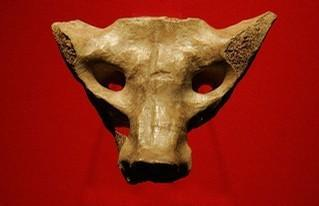
Which prehistoric artwork is this?
Camelid sculpture in the shape of a canine
Sacrum
Triangular bone at the base of a spine.
Stele
upright stone slab used to mark a grave or a site
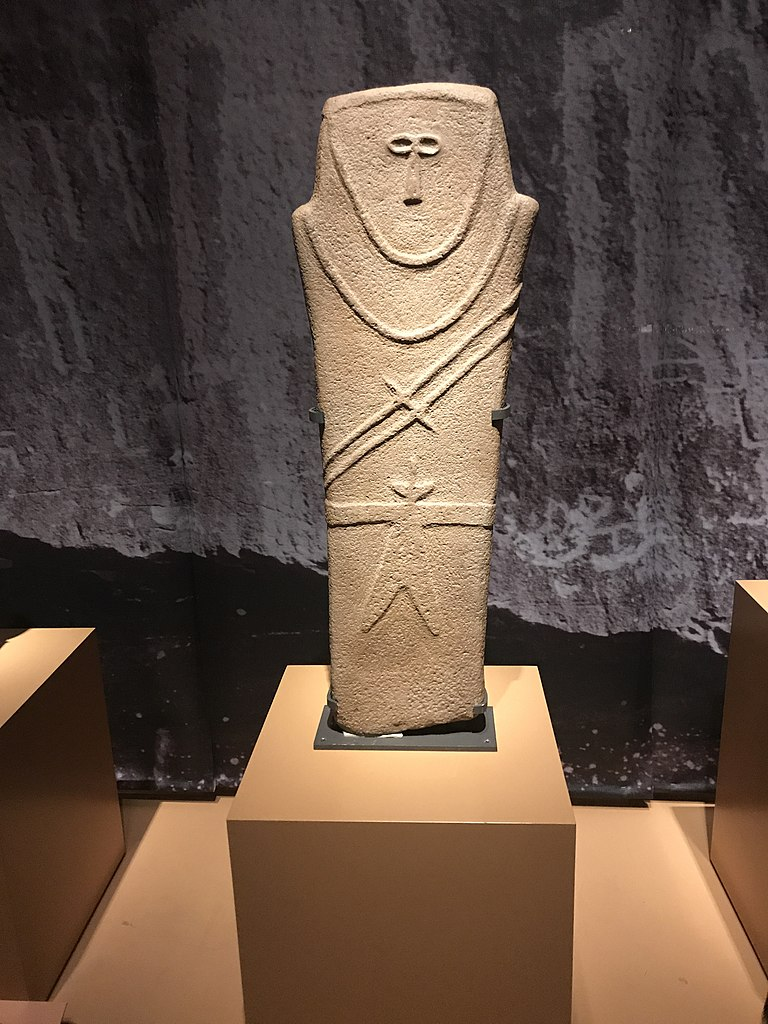
Which prehistoric artwork is this?
Anthropomorphic Stele
Anthropomorphic
having characteristics of the human form, although the form itself is not human.
Function of steles
Religious or burial purpose, perhaps as a grave marker.
Cong
tubular object with a circular hole cut into a square-like cross-section
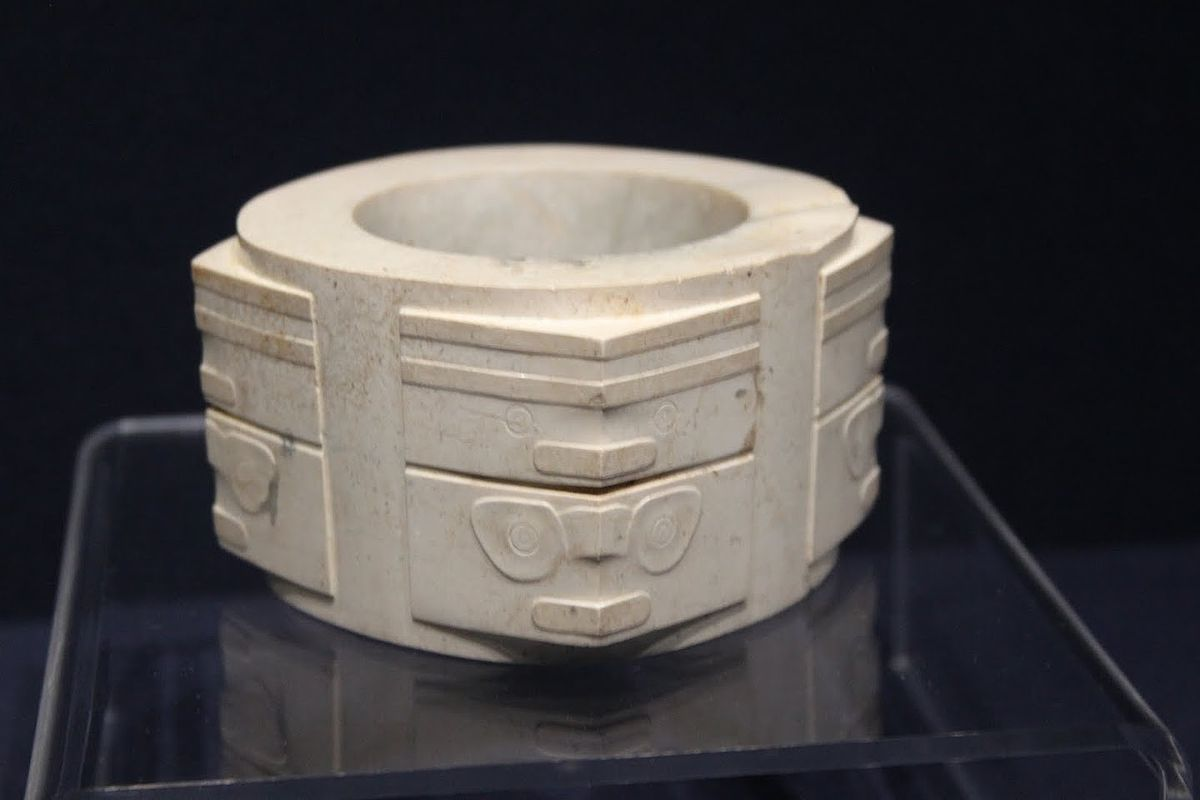
Which prehistoric artwork is this?
Jade Cong
What virtues did the Chinese link Jade to?
Durability, subtlety, and beauty.
How could the designs on the Jade Cong be made?
By rubbing sand.
Which era was the Jade Cong made in?
Neothilic
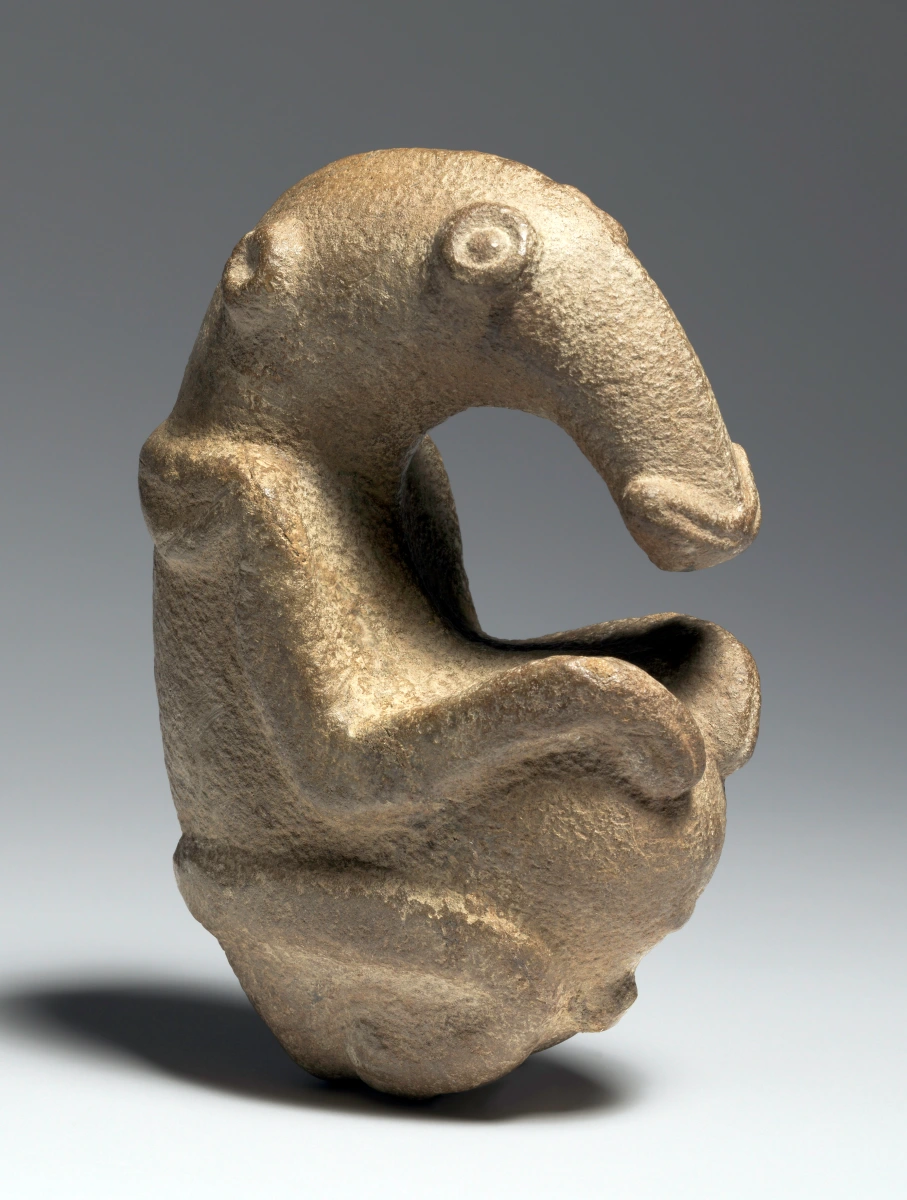
What prehistoric artwork is this?
The Ambum Stone
What is the Ambum Stone made of?
Graywacke
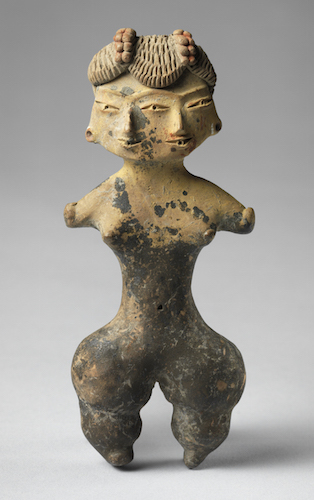
Which prehistoric artwork is this?
Tlatilco Female Figure
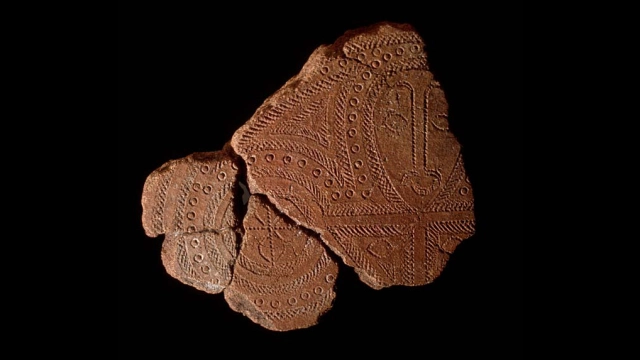
Which prehistoric artwork is this?
Terracotta Fragment
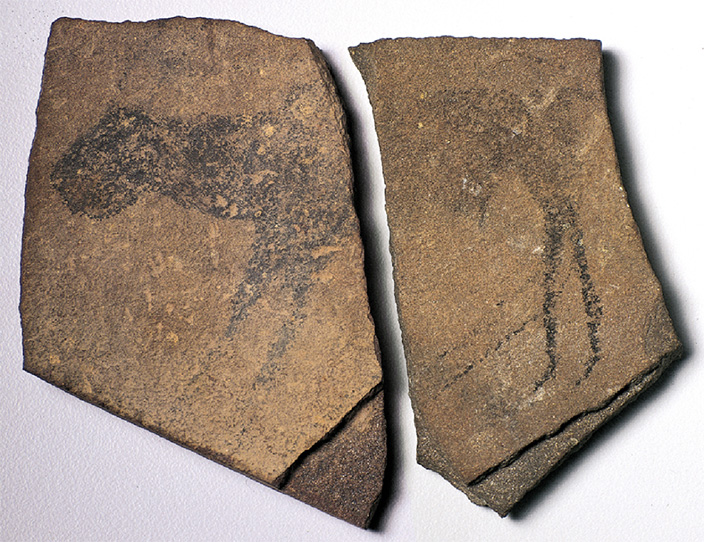
Which prehistoric artwork is this?
Apollo 11 Stones
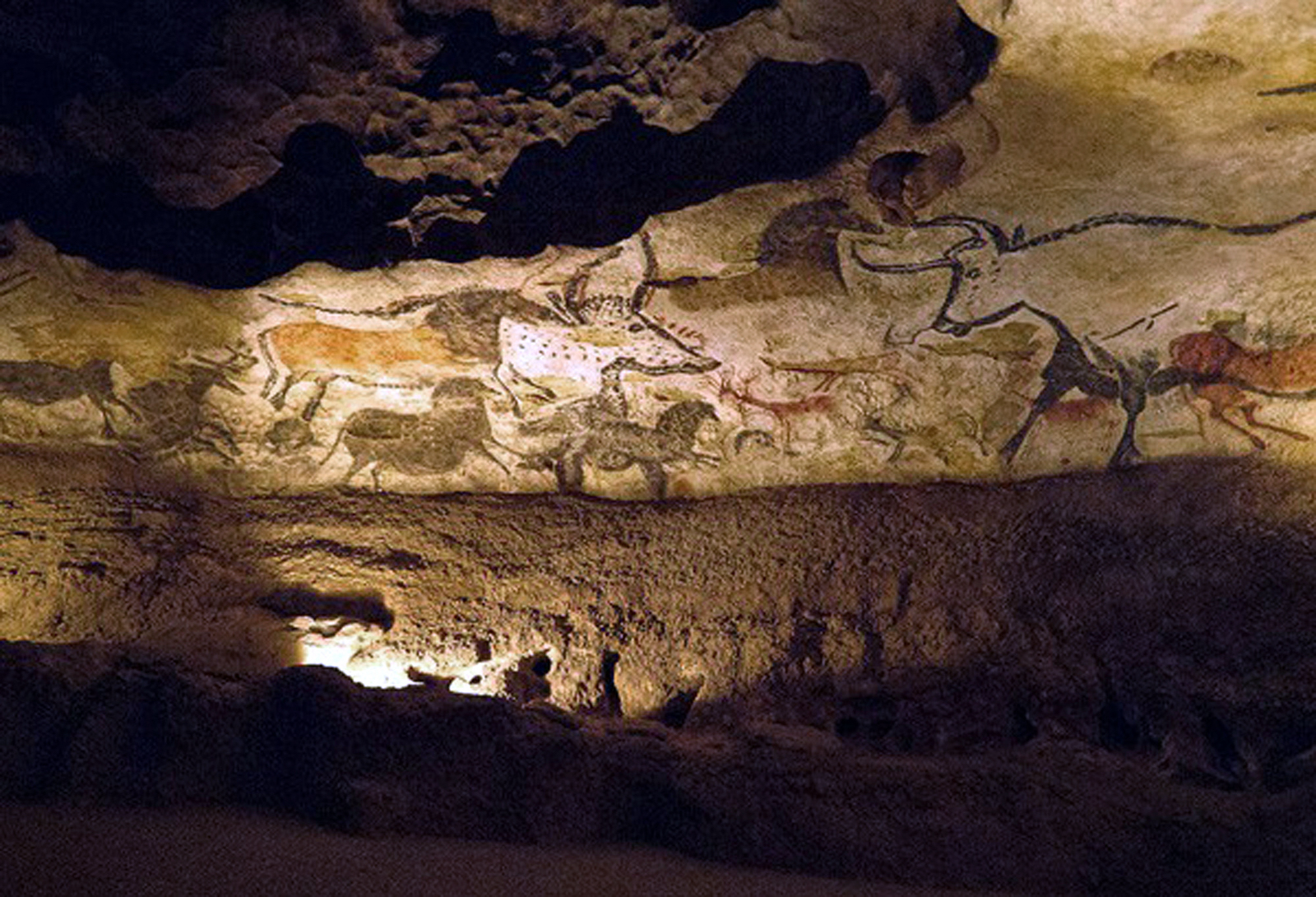
Which prehistoric artwork is this?
Great Hall of the Bulls
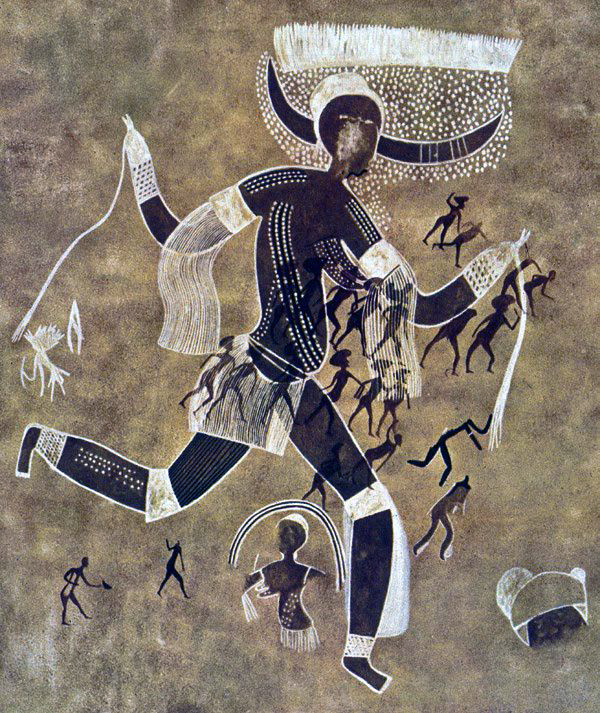
Which prehistoric artwork is this?
Running Horned Woman

Which prehistoric artwork is this?
Stonehenge

Which prehistoric artwork is this?
Beaker with Ibex Motifs
Where was the Camelid Sacrum in the shape of a canine found?
Central Mexico
Where was the Anthropomorphic Stele found?
Arabian Peninsula
Where was the Jade Cong found?
Liangzhu, China
Where was the Ambum Stone found?
Ambum Valley, Enga Province, Papua New Guinea
Where was the Tlatilco Female Figurine found?
Central Mexico
Where was the terracotta fragment found?
Lapita, Reef Islands, Solomon Islands
Where was the Great Hall of the Bulls found?
Lascaux, France
Where was the Running Horned Woman found?
Tassili n’Ajjer, Algeria
Where was the Beaker with Ibex Motifs found?
Louvre, Paris
Where was the Stonehenge found?
Wiltshire, United Kingdom
What is the Stonehenge made of?
Sandstone
What is the Beaker with ibex motifs made of ?
painted terracotta
Stylized
a schematic, nonrealistic manner of representing the visible world and its contents, abstracted from the way that they appear in nature
What natural products are used to make paint?
charcoal, iron ore, plant
What is a mortise and tenon?
a groove cut into stone or wood, called a mortise, that is shaped to receive a tenon, or projection, of the same dimensions
Where was the beaker with Ibex motifs made?
Susa, Iran
Shamanism
a religion based on the idea that the forces of nature can be contacted by intermediaries, called shamans, who go into a trance-like state to reach another state of consciousness.
What are the Apollo Stones named after?
Apollo 11 moon landing in 1969, the year the cave was discovered.
Where were the Apollo 11 stones found?
Wonderwerk Cave in Namibia
The old stone age is also called _______
Paleolithic Age
The new stone age is also called as _____
Neolithic Era
Who are Aubrey Holes named after?
John Aubrey
Megaliths
Stone of great size used in the construction of a prehistorical structure
Lintel
Horizontal beam over an opening.
_____ culture of Solomon islands is known for its pottery.
Lapita
_______ has one of oldest human faces in Oceanic art
Terracotta fragment
What does the sacrum bone symbolize?
the soul